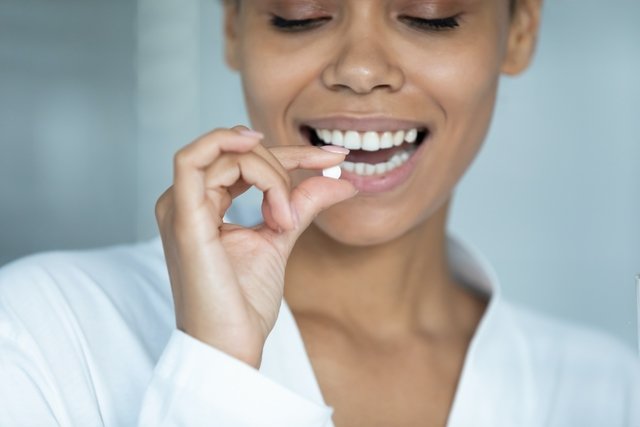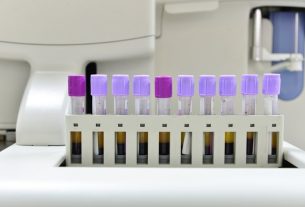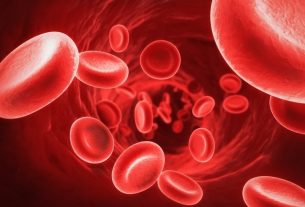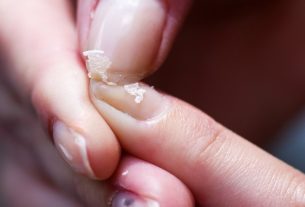Endofolin is a folic acid supplement, also called vitamin B9, indicated to reduce the possibility of malformation of the baby’s nervous system, in addition to treating folic acid deficiency in cases of anemia, hemodialysis or epilepsy, for example.
This is because folic acid is important in the formation of cell DNA and for producing and maintaining new cells in the body, and preventing defects in the closure of the baby’s neural tube.
Endofolin can be found in pharmacies or drugstores in the form of tablets, containing 2 or 5 mg of folic acid, or in the form of drops of 0.2 mg/mL, and must be used under medical advice.

What is it for
Endofolin is indicated for folic acid deficiency in several situations such as:
- Hemolytic or megaloblastic anemia;
- Hemodialysis;
- Prolonged use of oral contraceptives;
- Use of methotrexate for the treatment of rheumatoid arthritis;
- Epilepsy, depression, alcoholism, schizophrenia or psychoses;
- Periods of rapid growth in children;
- Low birth weight or prematurity.
Endofolin is also indicated before becoming pregnant or during the first 12 weeks of pregnancy to prevent malformation of the baby’s nervous system.
Furthermore, the folic acid present in Endofolin helps to improve the immune system’s response to infectious processes, and is also indicated in cases of prolonged or chronic diarrhea, Crohn’s disease, celiac disease or ulcerative colitis.
How to drink
Endofolin must be taken orally, in the doses and for the duration of treatment established by the doctor.
1. Endofolin tablet
For women planning a pregnancy, the dose of folic acid normally recommended by the WHO (1,2) is 400 mcg (0.4 mg) to 800 mcg (0.8 mg) per day, but this dose may vary and must be indicated by the obstetrician. The use of folic acid should be continued until the end of pregnancy. Find out how to use folic acid during pregnancy.
For other situations, doses for adults can vary from 2 to 5 mg per day, according to medical advice.
2. Endofolin drops
Endofolin drops have 0.2 mg of folic acid for every 1 mL of solution and the generally recommended doses of Endofolin drops are:
- Premature and lactating babies: the recommended dose is 0.25mL (5 drops) to 0.5 mL (10 drops) per day;
- Children aged 2 to 4 years: the recommended dose is 0.5 mL (10 drops) to 1.0 mL (20 drops) per day;
- Children aged 4 to 10 years: the recommended dose is 1.0 mL (20 drops) to 1.5 mL (30 drops) per day;
- Children over 10 years old and adults: the recommended dose is 1.0 mL (20 drops) to 2.0 mL (40 drops) per day.
The use of Endofolin by children should always be done under the guidance of a pediatrician, in the recommended doses and for the duration of treatment established by the doctor.
Possible side effects
The most common side effects that may occur during treatment with Endofolin are a bitter taste in the mouth, nausea, loss of appetite, excess intestinal gas, belly swelling, mental confusion, irritability or changes in sleep patterns.
Furthermore, although rare, allergic reactions may occur with symptoms such as redness, itching or blistering of the skin, which generally improve within a few days after stopping use of Endofolin.
Who shouldn’t use
Endofolin should not be used by people who are allergic to folic acid or who have pernicious anemia, severe liver disease with blood clotting problems or lung disease.
Endofolin tablets are not suitable for children under 14 years of age.
Bibliography
- OMS. Guideline: Daily iron and folic acid supplementation in pregnant women. 2013. Available at: <http://189.28.128.100/dab/docs/portaldab/documentos/guia_gestantes.pdf>. Accessed on January 17, 2023
- OMS. WHO recommendations on antenatal care for a positive pregnancy experience. 2016. Disponível em: <https://apps.who.int/iris/bitstream/handle/10665/250800/WHO-RHR-16.12-por.pdf?sequence=2&isAllowed=y>. Acesso em 17 jan 2023
- MERRELL, B. J.; MCMURRY, J. P. IN: STATPEARLS (INTERNET). TREASURE ISLAND (FL): STATPEARLS PUBLISHING. Folic Acid. 2022. Available at: <https://www.ncbi.nlm.nih.gov/books/NBK554487/>. Accessed on January 16, 2023
- VAN GOOL, JD; et al. Folic acid and primary prevention of neural tube defects: A review. Reprod Toxicol. 80. 73-84, 2018
- McNULTY, H.; et al. Effect of continued folic acid supplementation beyond the first trimester of pregnancy on cognitive performance in the child: a follow-up study from a randomized controlled trial (FASSTT Offspring Trial). BMC Med. 17. 1; 196, 2019
- CHITAYAT, D.; et al. Folic acid supplementation for pregnant women and those planning pregnancy: 2015 update. J Clin Pharmacol. 56. 2; 170-5, 2016
- ANVISA. Folifolin – folic acid tablet 5 mg. 2022. Available at: <https://consultas.anvisa.gov.br/#/bulario/q/?nomeProduto=folifolin>. Accessed on January 16, 2023
- ANVISA. Endofolin – folic acid tablet 2 mg and 5 mg. 2021. Available at: <https://consultas.anvisa.gov.br/#/bulario/q/?nomeProduto=endofolin>. Accessed on January 16, 2023
- ANVISA. Folacin – folic acid coated tablet 5 mg. 2021. Available at: <https://consultas.anvisa.gov.br/#/bulario/q/?nomeProduto=folacin>. Accessed on January 16, 2023
- ANVISA. Femme Folico – folic acid coated tablets 5 mg. 2020. Available at: <https://consultas.anvisa.gov.br/#/bulario/q/?nomeProduto=FEMME%20FOLICO>. Accessed on January 16, 2023
- MARJAN FARMA. Endofolin (folic acid) tablets. Disponível em: <https://io2.convertiez.com.br/m/drogal/uploads/bulas/7896226101842/endofolin_5488abab4661623f659b5500.pdf>. Acesso em 21 out 2021
- MARJAN FARMA. Endofolin (folic acid) drops. Available at: <https://www.drogariasoares.com.br/BACKOFFICE/Uploads/Bula/7896226101729.pdf>. Accessed on October 21, 2021

Sign up for our newsletter and stay up to date with exclusive news
that can transform your routine!
Warning: Undefined array key "title" in /home/storelat/public_html/wp-content/plugins/link-whisper-premium/templates/frontend/related-posts.php on line 12
Warning: Undefined array key "title_tag" in /home/storelat/public_html/wp-content/plugins/link-whisper-premium/templates/frontend/related-posts.php on line 13



